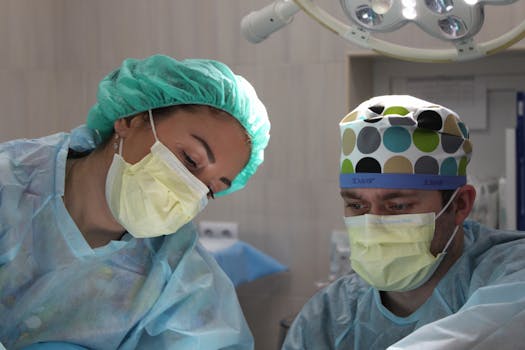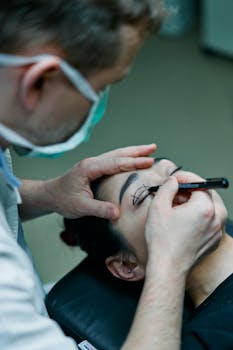Deciding whether to move forward with strip hair transplant surgery is an important step for anyone dealing with significant hair loss. This surgical technique—also called follicular unit transplantation (FUT) in clinical settings—remains a well-established option that can deliver dense, natural-looking results in a single session. Understanding how it works, the benefits and trade-offs, recovery expectations, and likely outcomes will help you weigh whether hair strip surgery is the right choice for your goals.
Strip hair transplant surgery: how it works
The procedure begins with a surgeon removing a thin strip of scalp from the donor area (usually the back of the head). Technicians then dissect that strip into individual follicular units under magnification and transplant them to thinning or balding areas. Because large numbers of grafts can be prepared at once, strip procedures often yield high graft counts in a single operation—an advantage for people seeking substantial coverage.
Pros of the procedure
- High graft yield: A single session can provide a large number of grafts, which may reduce the need for multiple surgeries.
- Good for extensive hair loss: When significant density is required, strip hair transplant surgery can be more efficient than some alternatives.
- Cost-effective per graft: In many clinics, the cost per transplanted graft via strip techniques can be lower than with certain other methods.
- Predictable follicle quality: Donor hair harvested from the permanent zone tends to have reliable survival rates.
Cons and considerations
- Linear scar: The most significant downside is a scar along the donor strip. Skilled surgeons minimize width and appearance, but scarring is possible.
- Longer healing of donor site: The donor area requires sutures or staples and needs time to heal, with temporary soreness and tightness.
- Not ideal for very short hairstyles: If you plan to wear your hair shaved close, the linear scar may be more visible.
- Recovery time: Some people experience more initial discomfort and a longer recovery compared with newer extraction-based approaches.
Who is a good candidate?
Ideal candidates have stable donor density in the permanent zone, realistic expectations, and scalp laxity that allows safe removal of a donor strip. Younger patients with progressive hair loss should discuss long-term planning with a surgeon to account for future thinning. Those prioritizing a single-session solution for widespread baldness often find hair strip surgery advantageous.
What to expect during recovery and results
After the operation you can expect some swelling, tenderness around the donor and recipient sites, and crusting over grafts that typically resolves within a week to two. Full graft maturation takes months; new hair often begins to appear around three to four months, with most growth evident by 9–12 months. Scar care and gentle scalp hygiene are important—using shampoo and emollients as directed, and protecting the area from sunlight during healing. For general guidance on gentle skincare and product choices after procedures, consider integrating mild, sustainable options and routines like those discussed in descriptive anchor text.
Comparing to FUE and other techniques
Follicular unit extraction (FUE) removes individual follicles rather than a strip of scalp. FUE avoids a linear scar and may be preferable for those who wear their hair very short, but it can require longer operative time and may produce a lower total graft count per session. Your surgeon will discuss trade-offs—scar location and visibility, number of sessions likely needed, and overall aesthetic goals—so you can choose the approach aligned with your priorities. For more background and clinical context on hair restoration methods, refer to reputable sources such as this overview: Hair transplantation overview (Wikipedia).
Preparing for surgery
Preparation typically includes stopping certain medications, avoiding smoking, arranging transport home, and following specific pre-op instructions from your clinic. Plan a week or so of reduced activity, and discuss pain control, antibiotic use, and follow-up visits with your surgeon.
Realistic expectations
Results vary by individual—factors such as hair caliber, donor density, scalp elasticity, and the surgeon’s skill all influence outcomes. Many patients achieve natural-looking density and renewed confidence, but patience is essential as hair growth unfolds over months.
- Takeaways:
- Strip hair transplant surgery can deliver high graft counts and strong density in one session, but it produces a linear donor scar.
- Ideal candidates have stable donor zones and realistic expectations about recovery and gradual hair growth.
- Compare FUT (strip) with FUE based on scarring preference, desired graft numbers, and hairstyle choices.
FAQ: Is the scar noticeable?
Experienced surgeons aim to keep the scar thin and concealed by surrounding hair. Visibility depends on scar healing, individual hair characteristics, and hairstyle; those who shave their head may see the scar more readily.
FAQ: How long until I see final results?
Initial regrowth often appears around three to four months, with substantial improvement by 6–9 months and final results typically at 12 months or later. Maintenance and possible future sessions depend on progressive hair loss patterns and goals.






